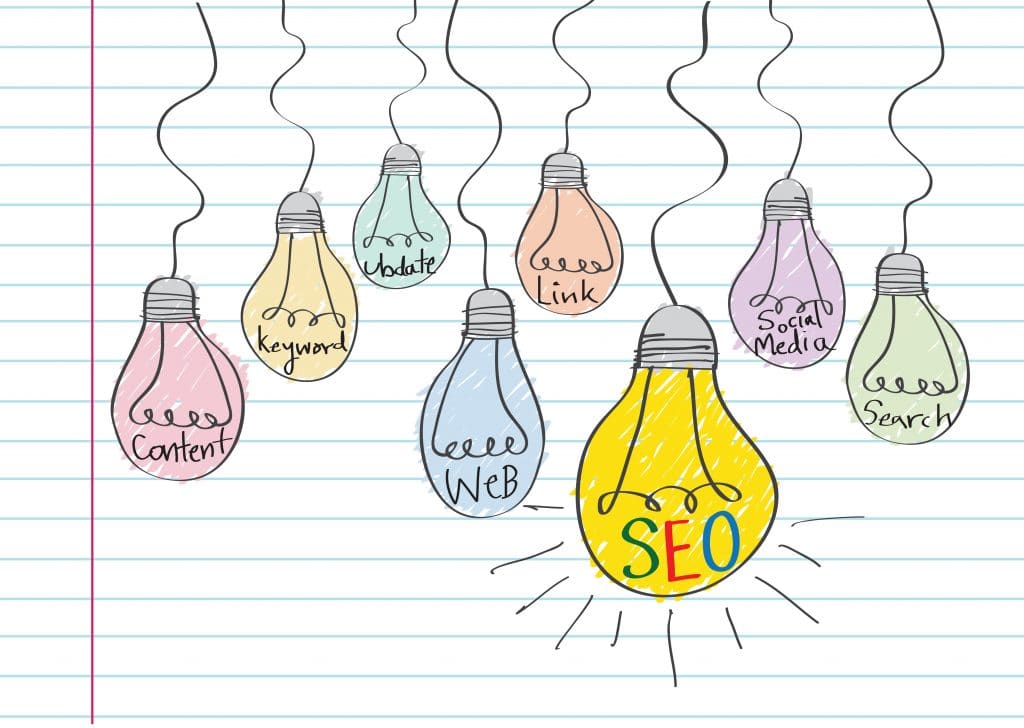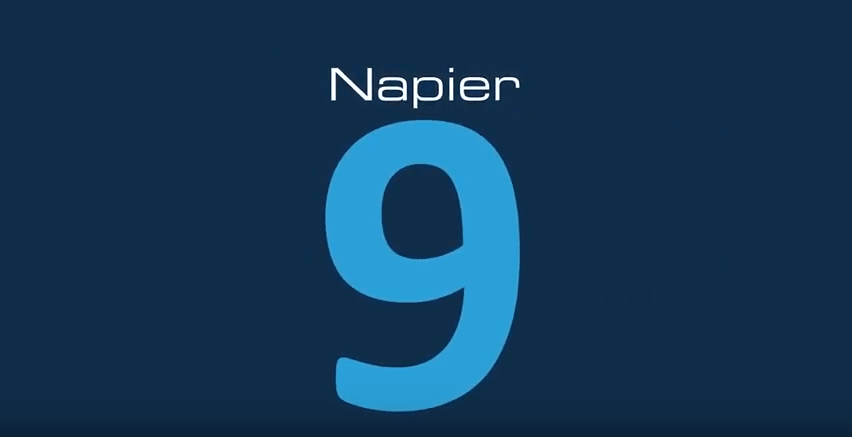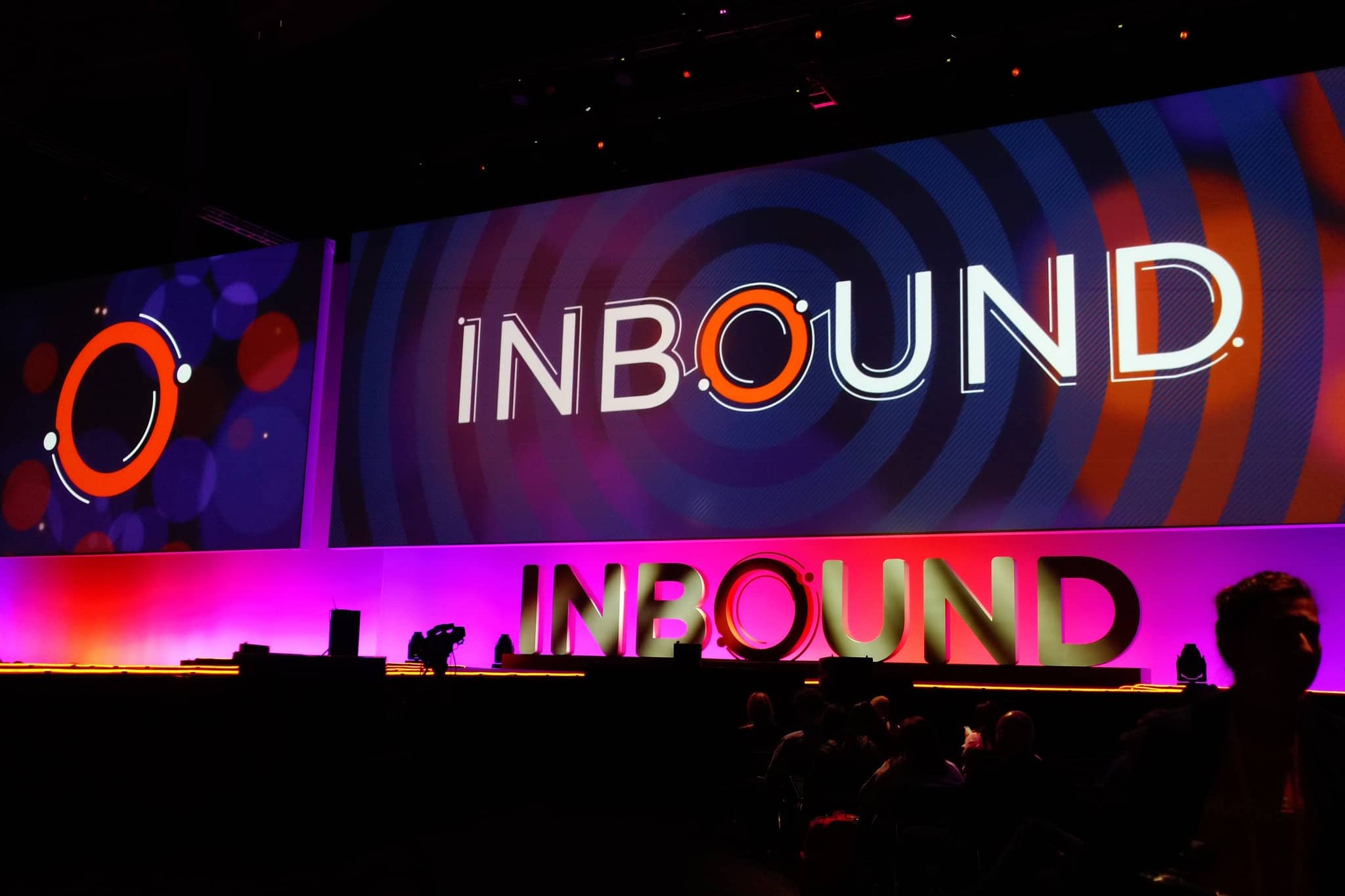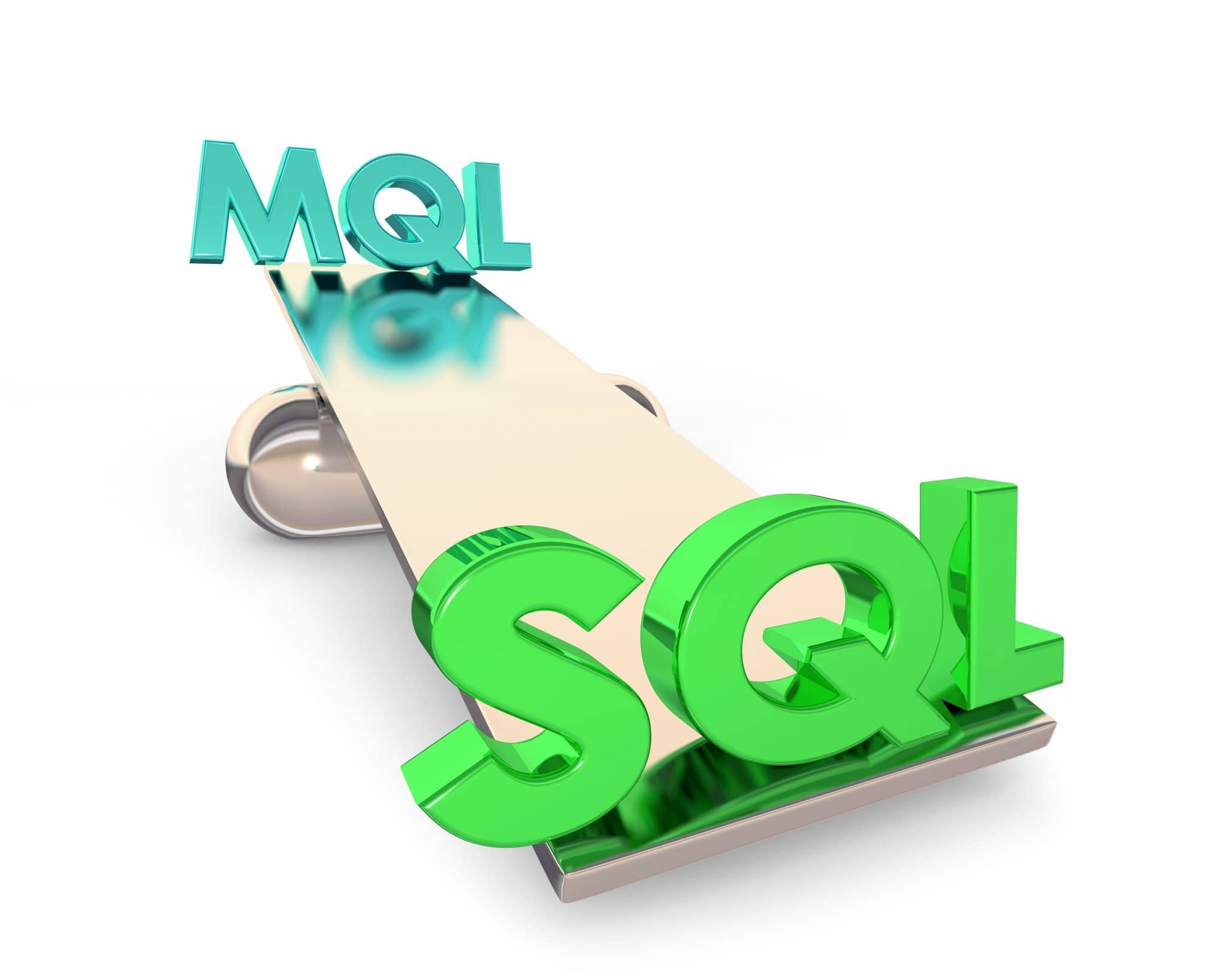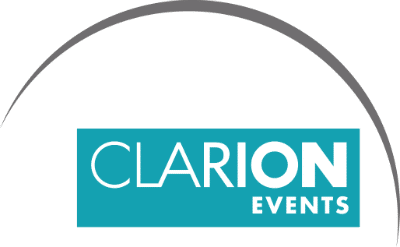Elektronik Magazine Introduces New Issues for 2020
Elektronik magazine, has announced 'Elektronik 2.0', as the editorial team has revealed that for 2020 instead of regular and special editions, the magazine will introduce issues that specifically cover the spectrum of trends and 'hot' topics within the industry.
The new issues will feature technology and business/markets themes, and aim to provide readers with a 'one-stop-knowledge-shop' on topics that are currently fundamental to their readers.
With previous editions of the magazine featuring a mix of random topics and resulting in readers 'cherry-picking' the parts of the magazine they are reading; this move means a specific edition of the magazine will offer readers a comprehensive source of information on one topic (e.g: the automotive industry) and advertisers a market-analogue advertising environment.
Elektronik has also announced the introduction of Social Media Plus and Social Media Chinese, offering advertisers LinkedIn, Facebook, Twitter and newsletter advertising.
At Napier, we think its great to see a publication modifying their approach to engage with their readers more successfully, and we look forward to seeing the response this approach receives from the industry.
What is Active View Viewability and How Can You Improve its Performance?
Ian Poole, editor of Electronics Notes, has provided some great insight with his blog posts in the past, which is why we were delighted to receive Ian's latest blog detailing what Active View Viewability is, and his journey to adopting Google Ads as the primary form of revenue generation for Electronics Notes.
What is Active View Viewability and How Can You Improve its Performance?
Many advertisers are now opting for programmatic forms of advertising such as Google Ads or one of the variety of other systems available. This is done to reduce costs and increase performance. As a result, advertisers need to be aware of various factors in choosing which websites their advertisements should appear on, if they want to select websites on which their ads should appear. From the other viewpoint publishers need to be aware of factors that make their sites attractive to advertisers whether they use programmatic banner advertising or directly placed ads.
In the electronics industry, companies have traditionally adopted directly placed ads. However, with click through rates diminishing and advertisers wanting to improve their return on investment, many have adopted other tactics including email campaigns and content marketing.
However, banner advertising can still provide some excellent returns - not only does it provide the click throughs directly onto a tailored landing page, but it also gives a high level of branding. Some reports have indicated that the branding aspects of banner advertising are equally or more important than the number of clicks received.
When selecting where to advertise, one of the key metrics now being used is that of Active View Viewability (AVV).
According to Google: "Active View metrics have been created in compliance with industry standards for measuring the viewability of online ads, as developed by the Media Rating Council (MRC). According to MRC guidelines, the standard for measuring the viewability of ads, are as follows:
A display ad is counted as viewable when at least 50% of its area is visible on the screen for at least 1 second. "
Traditionally many advertisers have requested that their ads appear above the fold, and this normally gives better results, but the actual picture is a little more complicated and AVV provides a defined metric to understand what is happening better.
At Electronics Notes, I have adopted Google Ads as the primary form of revenue generation. It enables me to focus on content generation all the time without hassle of managing the ads.
I have been on a journey to improve the overall site performance and improve its attractiveness to advertisers, and I hope that others can learn from this.
One key element of this journey has been to improve the AVV performance, so that advertisers using the Google Display Network (GDN) will want to target the site via Google Ads as what is termed a "managed placement."
It really started when I attended a day at the Google offices in London for AdSense users. (AdSense is the publisher side of Google Ads). Here the topic of AVV came up and returning home, I discovered my AVV was well below 40% - it was hardly surprising that at this time Electronics Notes was not a particularly attractive proposition for advertisers.
At the time, I used a large proportion of the Google delivery below the fold - ads above the fold were used by other advertising schemes. Although there are some advantages to showing ads just below the content, the AVV performance was very poor, so I made a number of changes.
Before detailing the changes, it helps to understand where the ad positions are located on the page:
- Top leaderboard - a 728x90 slot at the top of the page in line with the logo
- Top MPU - a 300x250 at the top of the right hand column
- Bottom MPU at the bottom of the right hand column,
- Skyscraper - 160x600 to the right of everything else and towards the top of the page
- Bottom leaderboard - 728x90 underneath all the content
Firstly, I enabled the advertisement positions above the fold for Google Ads - namely the Top leaderboard and Top MPU. Positions below the fold were given to another network that preferred below the fold advertising.
Next, I moved Bottom MPU up to around the page fold and enabled it for Google Ads.
The next stage was to enable the floating or "sticky" right hand skyscraper ad for Google Ads. Permission was required for the use of "sticky ads," and Google requests certain requirements are fulfilled. These were all very sensible and so with this permission gained, I started to show Google ads here. In terms of AVV, this performed very well, and it offered advertisers a good position.
Similar changes were made to the mobile site which was very important because about 45% of my traffic is mobile.
All of these changes required extensive experimentation but significantly improved the AVV performance, and we had a large rise in AVV figures.
A few interesting figures came out of this. The leaderboard at the top of the page did not score the highest AVV figure - people scroll down very quickly, often before the ad had loaded. I could have improved the AVV figure for this position by moving the ad beneath the logo, etc, but I retained it where it was to preserve the page layout and retain the "user experience."
The "sticky" skyscraper had an excellent AVV figure, which is not a surprise as it stays within view all the time.
The MPU at the top of the right-hand column performed well, but again, it suffered from people scrolling down quickly. That was particularly interesting. The most interesting one was the MPU position just on or below the fold. This performed better than the one at the top of the right-hand column. The reasoning for this is that it comes into sight once people start to scroll and remains there for a while.
In view of the MPU performance, I later decided that one ad in the right-hand column would suffice. I moved the top MPU position down almost to the position of the lower one, so that it was virtually on the fold, and removed the lower one.
This probably did not make too much difference to the overall site performance and revenue, but it reduced the ads by one which was useful from a user experience viewpoint and slightly improved the overall AVV figure.
So far, I have not mentioned in-content ads. I enabled these for both the mobile and desktop formats. Introducing these has not made much difference to the AVV figures as Google uses its AI algorithms to select the optimum positions. These have performed well and provide a good click through rate.
With in-content ads in place, it has also been necessary to look carefully at the number of ads appearing, and we are still experimenting with this. I am also trying to improve the quality of the content, so that people still want to visit the site. Pages have to be sufficiently useful to attract people, and I hope we are winning the battle here.
When I started on this journey, I did some research into the typical AVV figures that were being obtained by websites. Figures varied according to the research organisation, the country where the website was located, and the sector, but it appeared that typical figures were in the region of 45 to 55%. With the changes I made to Electronics Notes, I started below 40% and now have been consistently able to maintain figures of between 60 and 65%, although it does vary a little on a day to day basis.
There are a number of messages to take from this. The position of an ad within the page is crucial to its performance, and it is not just the top position that is best. Sometimes positions on the fold work well as they are in view for longer. It also helps to have a reasonable amount of clear space around the ad to prevent accidental clicks, and to make it nicely visible.
Programmatic Ads like Google Ads not only provide very cheap advertising when compared to directly placed ads, but they also give more insights into the performance for the advertiser. It is possible to select websites with high AVV ratings so that advertising will give the highest ROI.
7 Content Marketing Stats Every Marketer Needs to Know
As the B2B marketing world continues to evolve, it’s important to stay up to date with the latest from the content marketing industry. With some marketers doubting that a content marketing strategy is still important, the latest content marketing stats can provide great insight, so you know that the time spent on your content marketing strategy is not only important, but also worth it, to achieve growth.
But with so much research out there, it can be time-consuming to hunt down the most relevant and important stats by yourself. This is why we’ve pulled together the top 7 content marketing stats every marketer needs to know, to show why a content marketing strategy is still so important and how an effective strategy can bring great success for your company.
Content Marketing costs Up to 41% Less Per Lead Than Paid Search
Your current marketing mix might include several campaigns across a variety of platforms, including paid ads, social media marketing and email marketing. So why should your content marketing strategy be a priority over those activities?
Well, according to research by Oracle, content marketing costs up to 41% less than paid search for larger businesses, and 31% for mid-sized companies.
Prospects Want Content – Especially White Papers
White papers and e-books are arguably some of your most valuable resources for attracting leads, and according to Curata, white papers are among the top 10 tactics used by B2B content marketers, with 78% of prospects in the last year, reading white papers to contribute to a B2B purchasing decision.
Custom Content Creates a Relationship Between the Company and a Customer
Demand Metric revealed that 78% of customers perceive a relationship between themselves and a company when receiving custom content, with 90% of customers finding custom content useful.
As a simple yet extremely effective tactic, custom content allows you to tailor content with the company's branding, and provide them with high-quality, relevant and valuable information; and with 82% of customers feeling more positive about a company after reading custom content, it is clear to see this is a tactic that is working.
Content Marketing Generates Three Times as Many Leads as Traditional Marketing
In comparison to traditional marketing tactics, content marketing can generate three times as many leads, while also reducing cost by 62%.
It’s important to understand the different benefits content and traditional marketing can create for your company; but a good content marketer will know that if done right, content marketing will not only help you attract leads, but also nurture them through the funnel at the same time.
59% of B2B Marketers Consider Blogs as the Most Valuable Channel
Blogs should be a vital, if not the main, part of your content marketing strategy. Blogs are an easy yet effective way to inform, and interact with your audience, and are easy to share on different social media platforms.
With 59% of B2B marketers considering blogs as the most valuable channel, and databox revealing that the average conversion rate for a blog is 19% (the survey revealed 1-5% of visitors to blogs turn into a newsletter subscriber), it’s hard to argue that the writing and distribution of blogs shouldn’t be a top priority for content marketers.
48% Of Marketers are Making Youtube Video a Priority
Visual content marketing should also be an essential part of your strategy. From images, infographics and videos, this is another great way to get in front of your audience.
With the HubSpot state of inbound report revealing that 48% of marketers are making YouTube video a priority, and Cisco reporting that by 2021, video will represent 82% of all internet traffic; it's clear to see video isn’t going anywhere, and content marketers should seriously evaluate adding videos to their content marketing strategy.
Content Compliments Traditional Sales Techniques Perfectly
Still not convinced that content marketing is important? According to WordStream, approximately 49% of marketers are producing content to align closely with various stages of the sales cycle.
If used effectively, your content marketing strategy can target customers at each stage of the sales funnel, providing them with content which answers their pain points at the right time, ensuring you are also nurturing current leads, and retaining the users you already have.
Get in Touch
At Napier, we use our four-step approach to design and continually optimise campaigns that convert awareness to opportunity more quickly, increasing your prospects’ momentum through the funnel. If you want to find out how we could help you with your content marketing strategy (or another issue you may be facing), then get in touch in today!
New Data Reveals That More Than 50% Of Google Searches End Without a Click to Other Content
We recently read a blog written by Rand Fishkin, co-founder of SparkToro, that discussed new data from an update to Fishkin’s initial Google clickstream data study; revealing that in June 2019, for the first time, the majority of Google searches ended without a click on an organic or paid search result.
Using data from Jumpshot, Rand explored what these latest updates mean for marketers and the future of SEO; and in this blog we’ve pulled together some of his key (and most interesting) findings to share with you.
The updated data revealed that as of June 2019, searches made on both mobile and desktop resulted in 42.25% of organic clicks, 4.42% of ad clicks and an astonishing 50.33% of zero-click searches.
Looking at data from 2016 to 2019, it's clear to see desktop has not changed much over the last three years, with organic only down a few percent, and the results of June 2019 not far off from January 2016.
However, on mobile, where more than half of all searches take place, the results have presented a consistent pattern, with organic falling by almost 20%, while paid has nearly tripled, and zero-click searches have been on a significant rise.
There could be a number of reasons for this, if you consider Google’s increased aggression with how ads and instant answer-type features appear on a mobile device, or perhaps it’s the result of Google sending a huge portion of search clicks to their own properties (according to Jumpshot, Google sends 6.01% of all searches (~12% of search clicks) to websites owned by Alphabet, Google’s parent company).
So, what can a marketer do to ensure they are still achieving SEO success amongst these changes? Rand details three key ways:
- Make sure you are trying to find new ways to get value from zero-click searches
- Seek out keywords that have a higher CTR opportunity
- Get your content optimised on Google’s own properties (YouTube, Maps, Images, AMP, Knowledge Panels, etc.)
To find out more and read Rand’s full blog on the results of the new data, please click here.
elektroniknet.de Extends Reach to the Chinese Market
elektroniknet.de, a WEKA FACHMEDIEN publication, has announced that it is now extending its reach into the Chinese Market, by not only delivering content in Chinese, but also offering advertisers the opportunity to specifically reach the Chinese market through its subpage elektroniknet.de/chinese.
This move is particularly important for WEKA FACHMEDIEN, as China has been the most crucial trading partner for the Federal Republic of Germany since 2016 - and Germany is the most important European trading partner for the People's Republic.
At Napier, we think its great to see an electronics publication expanding into the Chinese market. With elektroniknet.de already achieving impressive performance figures (the website received a total of 12.17 million page impressions in 2018), this decision can only bring further opportunities for companies to increase their global reach; and we look forward to seeing the results it provides for both advertisers and companies.
Napier Partners with Market Analysis Experts Vantage Research
Napier recently started a partnership with Vantage Research, experts in market analysis, giving our clients access to invaluable information about the opportunity in countries around the world.
Vantage provides a detailed report of where the business opportunity is for your company in major international markets. Designed to pinpoint ‘serious contenders’ for international expansion the market entry reports include:
- A breakdown of where Demand is likely to be concentrated for the client’s offer and why.
- Analysis of key Economic and Regulatory factors, likely to impact the opportunity
- An insightful Competitor Analysis giving a SWOT summary of the client vs competitor brands
- Benchmarking – expert witness rankings of the key competitors, market gaps and entry options
Vantage can also offer more in-depth analysis of the markets that are most attractive, enabling our clients to plan market entry with more information and context. With Vantage’s extensive experience in the engineering and manufacturing sectors, this partnership supports Napier’s commitment to an insight-led approach, providing our clients with a great opportunity to optimise market entry plans.
If you’re interested in finding out more, why not drop me an email, and we can set up a discussion to identify potential target markets you could be missing.
New Delhi Print Media Announces 4th Edition of ‘The Spotlight on Indian Electronics'
New Delhi Print Media has announced the 4th edition of its yearbook 'The Spotlight on Indian Electronics', which is due to be launched in May 2019.
As the electronics industry in India continues to rapidly grow and evolve, the 2019-20 edition of 'The Spotlight on Indian Electronics', delivers useful information to professionals about the state of the industry in India. The report provides a detailed study and SWOT analysis of the ecosystem for the high priority product markets, as well as identifying the future drivers of growth amongst various segments in the industry.
We think its great to see a media house providing such a useful piece of content, which allows professionals from across the globe to understand the complete picture of the Indian electronics sector.
My Work Experience Week with Napier
Lily McIntosh, a Year 10 Durrington High School Student recently completed a week's work experience at Napier. Read her blog to find out what she learnt during her week at the Napier office:
My work experience at Napier gave me a chance to learn about what it’s like to be in the workplace and an idea into careers you could apply for in the future.
I am a Year 10 Durrington High school Student who is currently taking Business, Drama, BTEC Digital Information Technology and History as my GCSEs. Within my GCSE courses they have taught me how to set up a business, promote products and to target a certain audience. I decided to do my work experience at Napier Partnership in Chichester, because I thought it was suited to my GCSE’s and wanted to explore what working in a B2B marketing and PR company would be like.
Over the last week, I have learnt about researching and finding the right stories for the Directors' social media accounts, and how to publish and schedule Tweets using HubSpot. I also learnt about Inbound Marketing, and why it is so important for a modern marketer’s strategy.
Other opportunities I have had, include learning about ad design and video editing, with Napier’s graphic designer, Rob. Rob even showed me how a video is created through to the finished product. I have been shown how to use HTML coding for emails and websites, which is confusing at first but once you have your head wrapped round it all, it is not so difficult.
Overall, my experience here has been great, the Napier team has been very warm and welcoming during my time here. I have enjoyed learning new skills I could use in the future and in jobs that one day I might apply for.
Thank you to Napier for the insight into the world of work.
A 'Napier Nine' Video... Get to Know Account Director Rhianna Bull
In our ‘Napier Nine’ video series, we’ve been taking the time to learn more about the team. In this instalment we introduce you to Rhianna Bull, Account Director at Napier.
Watch the video below to find out the four words Rhianna would use to describe herself, her strongest quality, and the fictional place she would most like to visit, as she answers her nine questions…
Missed the other ‘Napier Nine’ Videos in our Series? Watch them Now!
- A ‘Napier Nine’ Video… Get to Know Managing Director Mike Maynard
- A ‘Napier Nine’ Video… Get to Know Media Analyst Rachael Penfold
- A ‘Napier Nine’ Video… Get to Know Business Development Manager Hannah Kelly
- A ‘Napier Nine’ Video… Get to Know Director Suzy Kenyon
- A ‘Napier Nine’ Video… Get to Know Director Dave Ingle
- A ‘Napier Nine’ Video… Get to Know PR Specialist Clare Reader
- A ‘Napier Nine’ Video… Get to Know PA and HR Manager Debbie McIntosh
- A 'Napier Nine' Video.. Get to Know Account Administration Executive Danielle Robertshaw
A 'Napier Nine' Video... Get to Know Account Administration Executive Danielle Robertshaw
Danielle Robertshaw, Account Administration Executive at Napier, is the latest to take part in our ‘Napier Nine’ video series.
Discover Danielle’s secret skill, her favourite quote and what she would spend her last £20 on, as she answers her nine questions…
Missed the other ‘Napier Nine’ Videos in our Series? Watch them Now!
- A ‘Napier Nine’ Video… Get to Know Managing Director Mike Maynard
- A ‘Napier Nine’ Video… Get to Know Media Analyst Rachael Penfold
- A ‘Napier Nine’ Video… Get to Know Business Development Manager Hannah Kelly
- A ‘Napier Nine’ Video… Get to Know Director Suzy Kenyon
- A ‘Napier Nine’ Video… Get to Know Director Dave Ingle
- A ‘Napier Nine’ Video… Get to Know PR Specialist Clare Reader
- A ‘Napier Nine’ Video… Get to Know PA and HR Manager Debbie McIntosh
- A 'Napier Nine' Video... Get to Know Account Director Rhianna Bull
New Electronics’ Peter Ring Interview
We recently asked New Electronics’ Peter Ring to participate in an interview with Napier, to discuss the organisation of his events and the successful results he receives from all the hard work. Read the interview below to discover how many people Peter reaches through the events, and the reason why events such as the BEEAs and Embedded Design Show were formed.
How long have you been running events alongside New Electronics?
Since 2013 when we launched the Electronics Design Show. This year we added a one-day roadshow on PCB Design and Manufacturing which was well received, and it’s running again on May 9th 2019 at Silverstone.
Why did you start running events? What are the goals for the events today?
We felt there was a gap in the market for a design focussed event, as publishers of both New Electronics and Eureka we are in an ideal position to deliver the audience which is often the biggest challenge. Each year we get around 4,000 designers to attend over the two days. Adding shows/events to our channels to market has given New Electronics a much higher level of visibility.
How is revenue/profit split at New Electronics between the publication, the database and events?
Online revenues account for a third of New Electronics revenues with print, inserts, projects and PCB making up two thirds. The EDS revenue sits in MA Exhibitions a separate company to MA Business who publish New Electronics. EDS turned over £1.2k million in 2018.
Do you have a specialist team running the events? How much time do the events take from the editorial team?
We do have dedicated marketing teams for EDS and PCB, Neil puts a lot of effort into creating and running the EDS Conference content, but it creates good content for the magazine too as well as helping attract the audience for EDS.
How many people do you reach through your events?
4,000 plus visit EDS and 1,000 came to PCB Design which is co located with FAST an adhesive event and Engineering Materials Live.
How does this compare to the readership of New Electronics?
We send out 15,000 copies of New Electronics reaching the universe of UK electronics designers which is 53,914.
How do you judge the success of each event?
Year on year visitor increases plus we track the rebook during the Shows, at EDS 2018 we had an 80% on site rebook
Why do you run the BEEAs separately from the Engineering Design Show?
We prefer our Awards to be a daytime business event. BEEAs celebrates their 10th anniversary in 2019 and London offers a lot of choice on venues. We were in County Hall this year, taking it to Coventry to run alongside EDS is not in our current thinking.
What is the most fun for you: the show, the awards or the publication?
Actually we really enjoy all of it but EDS gives us all a lot of pleasure. Meeting readers that appreciate New Electronics creating a platform for them to meet 220 exhibitors in one day, plus exhibitors returning year after year as they get great leads from EDS is very satisfying.
Napier Listed as One of the Top Digital Marketing Agencies in London
We are thrilled to announce that HubSpot has listed Napier as one of the top digital marketing agencies in London. With fierce competition, this is a great achievement that demonstrates Napier's consistently high standards and accomplishments.
Mike Maynard Managing Director says" As a HubSpot agency partner, it's fantastic for the Napier team to receive recognition after all our hard work this year, and we look forward to maintaining this momentum and achieving even more success in 2019!"
Winner of the Elektra Selfie Competition Revealed!
Congratulations to Alex Price, Marketing Manager at Vicor, who is the winner of the Napier Prop Selfie Competition recently held at the Elektra Awards. See Alex's winning picture below:
Top things we learnt at INBOUND 2018
Earlier this year, I attended INBOUND – one of the best and biggest marketing conferences around. I attended last year’s too and as always, I took full advantage of the advice and tips that INBOUND provided.
One of the key sessions I went to at INBOUND this year, was ‘Content is the key to the email Inbox’. An interesting session that covered what is really needed to build trust, generate leads and cultivate a customer’s loyalty.
Rules for Inbox Placement and Determining Optimal Cadence
The session was held by Liz Ryan of Mojo Media Labs, who has over 20 years marketing experience and specializes in email marketing and marketing automation. She believes there are 3 rules for inbox placement including: permission, cadence and content. In this session Liz also explained how to determine optimal cadence.
To determine optimal cadence, agencies should use preference centers to explicitly ask how often subscribers want to receive your email content and monitor campaign reporting by looking for thresholds when unsubscribes increase and/or click through rates fall. It is also imperative to segment your audience into groups based of behavior engagement and email them more often than the less engaged segments; consider your content – remember, emails need to create value for subscribers.
Monitoring campaign reporting and knowing to segment your audience is great, but it’s good to know things like when the best day is to send an email or how often you should send them. Within the session, Liz mentioned ‘Seventh Sense’, a provider of email analytics who have partnered with both Marketo and Hubspot. The partnership will empower users to optimize the performance of their email outreach which personalizes delivery times and segments their lists based on user engagement level.
Seventh Sense is a fantastic new platform to use as it builds profiles on every person to identify their engagement times – the time of the day, day of the week and the level of brand fatigue. Regardless of how many emails you are sending out, with Seventh Sense, every email will be automatically sent at the optimal time for each individual.
How to make content relevant
The next part of the session was about how to make content relevant and compelling. Liz provided the following tips and advice:
- Define value proposition – this tells prospects why they should do business with you rather than your competitors.
- Buyer Persona – Buyer personas disclose insights about your buyer’s decisions – attitudes and criteria that drive prospective customers to choose you.
- Create content for lifecycle stages – Have original content in order to boost SEO rankings, gain leads and have content for your website and blogs.
- Tailor content based on targeting - Content needs to speak to a specifier person with a specific need .
Creating a content strategy
A content marketing strategy helps prepare and plan for reliable sources of website traffic and leads. A good starting point for this plan is to set out a mission statement to make it easier to focus on what is important and what’s not. The strategy should reflect your goals and buyer personas.
Second thing is to segment your data by engagement levels and to have an ‘opt-out’ unengaged segment. Segmenting audiences is crucial as customers are more empowered than ever, making purchase decisions at a faster pace than ever before.
Finally, you should identify issues at specific domains and segment that data for sending in smaller amounts or to those who are super engaged.
Why not take a look at our other posts on INBOUND?
HubSpot's State of Inbound Report 2018
The Top 15 Things We Learnt at INBOUND 2017.
INBOUND 2017 Taught Me: The Importance of Look-alike Campaigns
INBOUND 2017 Taught Me: Topic Clusters
Huthig Welcomes a New Member to Their Team
Martin Probst is the latest member to the join the team at publishing house Huthig, whose key areas will include Sensors/Sensor-ICs, Optoelectronics, Analog-Mixed-Singal-ICs, Power (Supply), Inverter and Battery-Technologies.
Here at Napier, we thought it would be great to learn a little bit more about Huthig's latest editor and Martin kindly agreed to participate in a interview with us. We were thrilled to receive his responses telling us a little bit more about himself:
- How long have you been working within the electronics industry?
I’m quite new to electronics. I started volunteering in October 2016 at Hüthig and its electronic magazines. Volunteering is somewhat like an apprenticeship for journalists that lasts around two years. However, I became a full time editor at Hüthig since August 2018.
- Why did you decide on a career within electronics?
Well, I wasn’t looking for a career within electronics, rather was I looking for a career within the media. I wanted to work for print or online and so I found the job offer from Hüthig. I hardly had any background with electronics back then, but I said to myself that I can do it and I have to at least try. The challenge was exciting. Two years later I am still here and still as excited as I was on my first day.
- What are your key areas of interest within the industry?
I think sensors are super interesting. They are in a way the senses for a lot of electronic systems. They see, they smell, they feel, they hear. They also enable a lot of the current trends like autonomous driving or smart applications.
- Do you have a favourite electronic gadget?
I guess my smartphone, if you consider it a gadget. It’s just fascinating how far they’ve come in the last decade or so. Nowadays you can do so much stuff on them like watching movies, reading newspapers, sending news out to millions of people and so on. And it looks like the technology will just keep getting better.
ecsn Driving Innovation with ‘Powering Innovation Workshop’
The Electronic Components Supply Network (ecsn) have invited members to the ‘Powering Innovation Workshop’, in an effort to help them investigate how they position their organisation for innovation and revenue growth.
Presented by Dr Dave Richards, the workshop is designed to inspire members, and provide a framework to embracing a more strategic approach when leading innovation within their organisation. Aimed at the leadership teams of ecsn, the workshop will investigate some of the latest thinking and practise on innovation and how it may be practically applied to their organisation.
Dr Dave Richards is a globally recognised and published thought and practise leader, who has previously helped organizations achieve their full potential for all kinds of innovation; including new product development, technology applications, business improvement, customer engagement and open innovation.
It is encouraging to see that the ecsn association is providing support to their members, by trying to help them drive innovation within their organizations. With the workshop due to take place on the 29th November 2018, I look forward to hearing the positive feedback the workshop is sure to receive.
Napier Competition - Can you Name this Industry Figure? - Winner Revealed!
Congratulations to Todd Bria, who is the winner of our competition 'Can you Name this Industry Figure?'
We can reveal that our industry figure is in fact a younger version of Johnny Waddell. Congratulations to Todd who guessed correctly!
Napier Welcomes Jennifer Deroche as Account Manager
Jennifer joins the Chichester team bringing a wealth of experience from France and the United Kingdom, having developed her PR and Marketing skills in both agency and in-house. Her expertise includes public relations, strategic marketing, email campaigns and events. Jennifer’s previous experience covers a range of different industries, from academic publishing to agriculture. This year, Jennifer was awarded the Chartered Institute of Marketing Diploma in Professional Marketing.
”Jennifer is a fantastic addition to the Napier team,” commented Mike Maynard, managing director of Napier. “Our clients will value her international experience and deep knowledge of PR and marketing. The growth of Napier is driven by our talented team, and bringing in experts such as Jennifer will help the agency continue to expand.”
Napier’s Toolbox
As a marketer you are often faced with a combination of problems that are your responsibility to fix. The marketing world is filled with tips and tools that all promise to solve your problem instantly; but at Napier we know this is often not the case.
It can be overwhelming when faced with advice from several sources that all tell you different ways on how to improve your SEO or the things you must include when creating a persona. But what happens if you are given access to tools that allow you to find the solution for yourselves?
Napier’s Toolbox - a collection of the most important marketing tools is the answer to your problems.
We’ve created the best tools to help you in all aspects of marketing. From your website, to your ROI and even your MQL’s, we’ve got your covered. Our toolbox includes:
Napier’s Marketing ROI Calculator
ROI is often a marketer’s top priority, and when creating a campaign, it is one of the most important outcomes to calculate. Our ROI calculator allows you to calculate the potential increase in profit and ROI for a campaign where you can estimate its impact on the sales funnel.
For three simple steps on how to use the calculator it to its full potential read our blog.
B2B Persona Creator Tool
As customers continue to grow and change, it can be hard for marketers to pinpoint exactly who they want to target. A persona is so important because it allows you to create a targeted campaign, with the right content and the right approach; ensuring the most successful possible outcome.
Our B2B Persona Creator Tool allows you to develop B2B personas for a specific campaign, and truly understand your target audience from the beginning. All you need to do is answer the questions provided, sit back and watch the tool do the work for you.
To understand about the value of personas, read our post ‘Buyer Persona’s – Why are they so Important?’
MQL and SQL Definition Tool
As a marketer it can often be hard to determine the difference between a MQL and a SQL, with the biggest question often being asked ‘when should I hand over to sales?’ With so many different versions of a MQL and a SQL, it can be hard to know what these terms mean for your company.
Our MQL and SQL definition tool allows you to identify what information and behaviour qualifies your leads for either marketing or sales. The tool will then provide an easy to read breakdown of what information determines whether they are a MQL or a SQL.
For more information on how use the tool to its full potential, read our blog.
Understand the difference between MQLs and SQLs with Napier’s Definition Tool
In today’s world of modern marketing, it can be hard to understand what behaviour determines a lead as a Marketing Qualified Lead (MQL) or a Sales Qualified Lead (SQL). Unfortunately, there is no one universal answer that states if a lead behaves a certain way then it is almost certainly a MQL or SQL.
Item Media define MQL’s as a “lead that definitely has value” and has been identified as a likely customer in the future. In comparison they describe an SQL as someone who has “clear and qualified buying intent” and is often already or nearly at the buying or decision stage of the funnel.
But how do you piece together what behaviour qualifies a MQL or a SQL for your company? At Napier, we have the answer with our MQL and SQL definition tool. We know it can be hard to identify what type of a lead you have, and when working closely with sales, it can be difficult to know when to hand your lead over to the sales experts.
Our MQL and SQL definition tool allows you to personally identify what information and behaviour qualifies your leads for either marketing or sales. The tool achieves this through asking select questions for each section, and then providing an easy to read breakdown of your information; which successfully defines the behavioural features you look for in a MQL and a SQL.
Try out our MQL and SQL definition tool now, and get in touch to let us know if our tool has helped you!
Buyer Personas - Why are They So Important?
It is clear to see that the marketing world has evolved over the years, with online platforms now playing a significant part in targeting customers. But with so many options, marketers can often struggle to break free from the crowd and target the right audience successfully.
The solution? A buyer persona.
As a fictional representation of a company’s typical customer, a buyer persona is applied in the early stages of campaign planning to help marketers pinpoint exactly who they want to target. A persona provides a detailed background on a specific target customer; including their age, education level, skills in terms of using the internet and their understanding of the product, as well as a set goal or objective that they are trying to complete when visiting the website. These elements create personas that are representative for a business’ larger target audience, as well as providing the team with shared understanding of customers in terms of goals and capabilities.
An important purpose of personas is the ability to develop solutions, products and services based upon the needs and goals of your customer. This allows you create a targeted campaign, with the right content and the right approach; ensuring a successful outcome.
At Napier, we know how important a persona is to your campaign, but also how time-consuming it can be to create one. This is why we’ve built Napier’s very own B2B Persona Creator Tool. Our tool allows you to develop B2B personas for a specific campaign, and truly understand your target audience from the beginning. All you need to do is answer the questions provided, sit back and watch the tool do the work for you.
In an easy to read format, the B2B Persona Creator Tool will then generate a report of your persona detailing all the information you need to create a successful targeted campaign. You can then create multiple personas and easily compare their similarities and differences and work out how to best target their needs.
Why not try out the tool today? And let us know how it helped you!
A 'Napier Nine' Video... Get to Know PR Specialist Clare Reader
In our 'Napier Nine' video series, we've been taking the time to learn more about the team. In this installment we introduce you to Clare Reader, PR Specialist at Napier.
Watch Clare's video below to find out what movie title she would give her life, the fictional place she would most like to visit, and her secret skill, as she answers her nine questions...
Missed the other ‘Napier Nine’ Videos in our Series? Watch them Now!
- A ‘Napier Nine’ Video… Get to Know Managing Director Mike Maynard
- A ‘Napier Nine’ Video… Get to Know Media Analyst Rachael Penfold
- A ‘Napier Nine’ Video… Get to Know Business Development Manager Hannah Kelly
- A ‘Napier Nine’ Video… Get to Know Director Suzy Kenyon
- A 'Napier Nine' Video... Get to Know Director Dave Ingle
- A 'Napier Nine' Video... Get to Know PA and HR Manager Debbie McIntosh
- A 'Napier Nine' Video... Get to Know Account Director Rhianna Bull
A 'Napier Nine' Video... Get to Know Director Dave Ingle
In the latest installment of our 'Napier Nine' video series, we learn all about Dave Ingle, Director at Napier.
Watch Dave's video below to find out the Napier project he is most proud of, what he would spend his last £20 on, and the job title that really reflects what he does at Napier, as he answers his nine questions...
Missed the other ‘Napier Nine’ Videos in our Series? Watch them Now!
- A ‘Napier Nine’ Video… Get to Know Managing Director Mike Maynard
- A ‘Napier Nine’ Video… Get to Know Media Analyst Rachael Penfold
- A ‘Napier Nine’ Video… Get to Know Business Development Manager Hannah Kelly
- A ‘Napier Nine’ Video… Get to Know Director Suzy Kenyon
- A 'Napier Nine' Video... Get to Know Creative Services Manager Rob Furby
- A 'Napier Nine' Video... Get to Know PR Specialist Clare Reader
- A 'Napier Nine' Video... Get to Know PA and HR Manager Debbie McIntosh
- A 'Napier Nine' Video... Get to Know Account Director Rhianna Bull
Clarion Events acquire PennWell to Expand North American Presence
Clarion Events, one of the oldest independent event organizers in the UK, has acquired PennWell Corporation – a private B2B media, conference and exhibition company. The acquisition brings together two of the industry’s most respected companies, as it enables Clarion events to expand its North American operations, as they form one of the largest event companies in the world.
PennWell previously organised more than 40 exhibitions and conferences around the world. They also handled 130 media properties for many industries, including: oil and gas, electronic power generation and delivery, hydropower, renewable energy, fiber-optics and cable and aerospace. In the electronics sector they are particularly known for the title Military & Aerospace Electronics.
The acquisition will clearly benefit both sides of the table, as PennWell’s roster of market-leading events will enhance Clarion Events' portfolio whilst Clarion’s global network and depth of resources will no doubt strengthen PennWell’s offerings.
With an impressive presence across Europe, Asia, Africa and the Middle East. Clarion Events' has the reach to enhance PennWell’s offers to worldwide customers, including their diversified portfolio of events, such as the POWER-GEN series, DistribuTECH for electricity distribution, as well as media brands such as the Oil & Gas Journal.
PennWell is the latest in a series of global acquisitions by Clarion, who purchased Urban Expositions back in 2015, and announced in February the acquisition of Hong Kong based Global Sources, a leading events organiser and online B2B marketplace operator.
It is interesting to see Clarion Events' making moves across the globe as they reinforce themselves as a widely established company in the industry. Their latest acquisition of PennWell presents their commitment to building a strong and competitive presence in North America as they continue to build their portfolio and the innovative events within it.
Napier continues to grow with 2 New Client Wins
Napier continues to prove itself as a successful B2B PR and Marketing agency with 2 new clients wins – Redis Labs and NetSpeed Systems.
Redis Labs, a leading computer software company, has appointed Napier to help them increase their Brand Awareness through PR activities in the UK. Using Napier’s technical expertise and relevant experience, they will secure coverage for Redis Labs in a diverse range of vertical markets.
Napier has also been appointed by NetSpeed Systems, a company that provides scalable, coherent on-chip network IPs to SoC designers. Napier has been selected to run a pan-European PR campaign to increase the awareness and preference of NetSpeed Systems in Europe.
Napier are excited to be working with two such innovative companies and look forward to promoting their brands through high quality PR activities.





